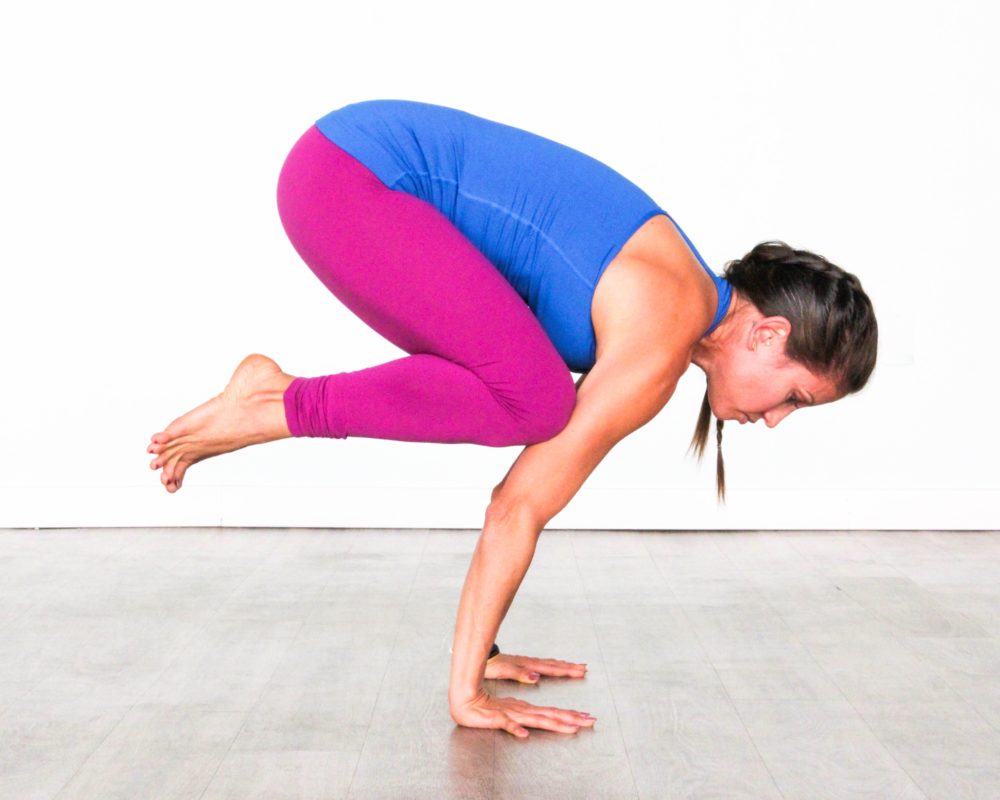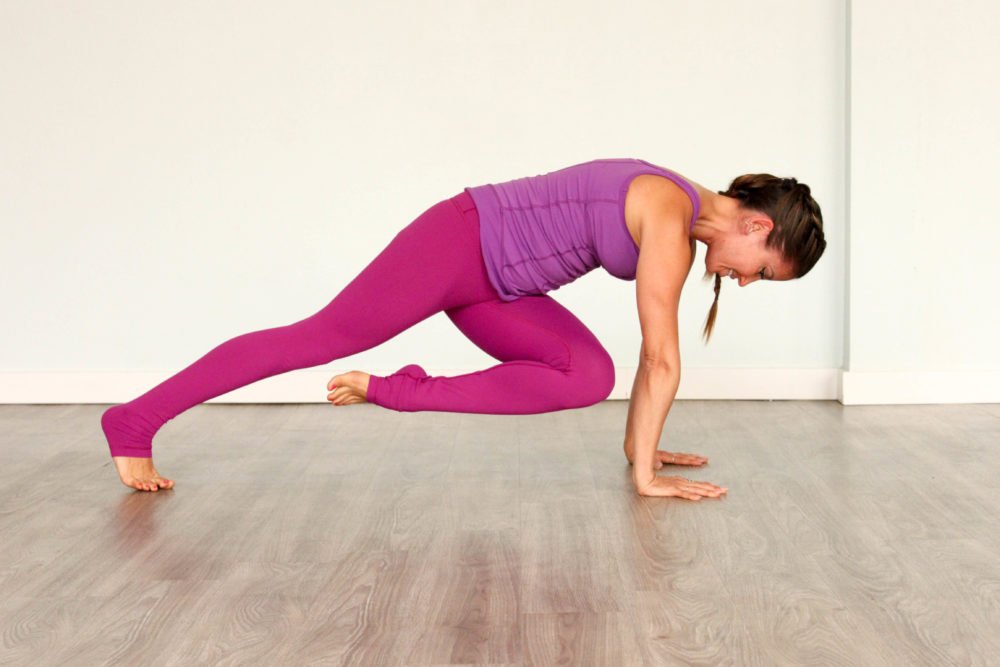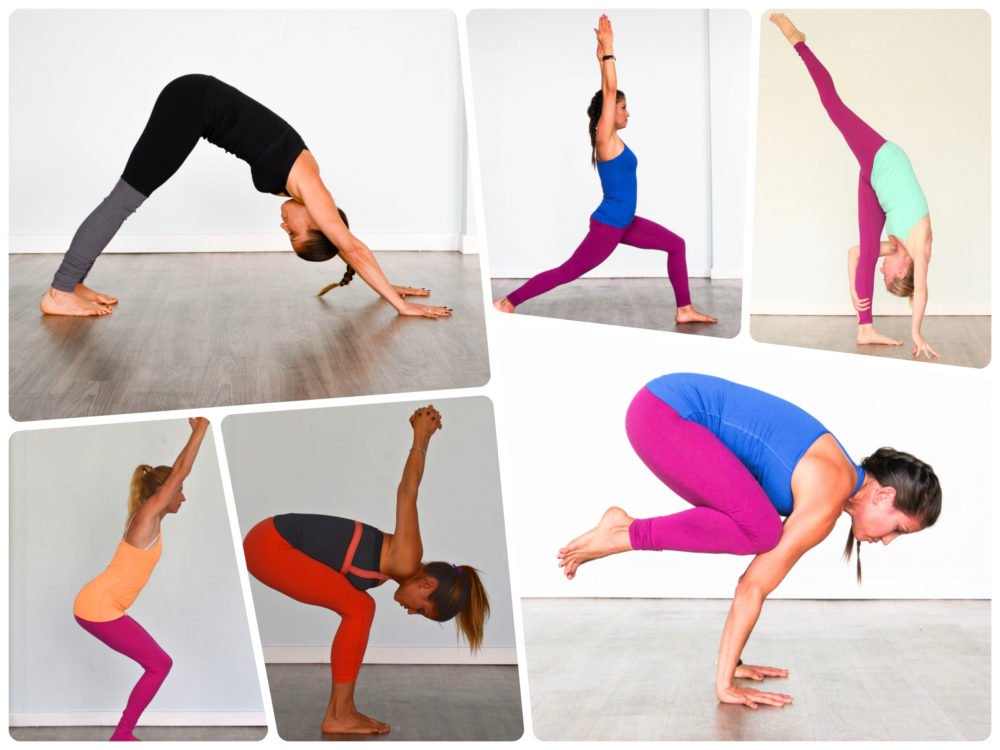
How to Build Heat in Vinyasa Yoga Classes
Creating enough heat at the beginning of class can make a big difference in how students feel during, and even long after class. When we don’t build enough heat, the joints and muscles will be rigid, and the progression of poses will seem disconnected. Internal heat is essential for preventing injuries and it helps create more ease in the deeper poses. Getting some of the cardio component with repetitions and standing flows also targets our most important muscle, the heart. As teachers we have to remember that in order for students to get into the middle and ending postures safely, it requires effectively warming up the spine, shoulders, hips, and hamstrings from various angles. For example, to warm up the spine we must strengthen the surrounding muscles with backbends, increase torque mobility with twists, and lengthen it with forward and lateral bends. To create space in the shoulders we take into consideration the upper back and chest, as well as the actual muscles surrounding the shoulder joints. The same goes for the hips. Warm glutes, quadriceps and hamstrings helps prepare the body for most of the poses taught later on. Below are six different ways to create internal heat.
Sun Salutations Warm Up the Whole Body
Surya Namaskar, or sun salutes, are an easy way to warm-up the whole body and there are many permutations to choose from. The traditional Sun Salutation A and B are made up of starting from a standing position, reaching up, folding forward, taking a vinyasa (chaturanga, updog, downdog), holding downdog for a few breaths, and then taking it back to standing at the top of the mat. The only difference between Sun A and B is adding Chair pose and Warrior 1 to create Sun Salutation B. However, you can do Low Lunge or High Lunge instead of Warrior 1, or replace Warrior 1 with a Warrior 2 instead, and so on. Ashtanga Yoga always begins with five Sun As, followed by five Sun Bs. Every pose in this warm-up is moved through at a pace of one breath per movement with the exception of holding downdog for five breaths after Warrior 1 on each side. In Vinyasa Yoga it’s yogis choice. We like to start our warm-up flows by holding the “skeleton series” poses for five breaths each on the first round so we can work on proper alignment. After the first round, we move into repeating the same flow a few more times at one breath per movement. Encourage students to follow the speed of their own breath and observe how students feel to assess if they need more heat before taking them into poses that require more flexibility.

Abdominal Work Makes You Sweat and Creates a Strong Spine
Doing core work gets the heart pumping and the heat flowing quickly. We find that 3-5 rounds of standing flows combined with 3-5 minutes of abs does the trick quite nicely. Try a few of our favorite exercises for firing up the abs.
- Flying Monkeys Start from a runner’s lunge and have students jump-switch the feet nine times (ending on the opposite foot), pausing to catch their breath and repeating for a total of 3-6 sets. Be sure to cue engaging the core so they are light on their feet and hardly making a sound as they jump-switch.
- Bicycles Have students lie on their backs with hands interlaced behind the head. Cue cross-tapping opposite elbow to knee, extending one leg and bending the other. To make it more challenging, give the option to start with legs straight as if doing leg lifts and moving to knees bent when they get too tired. Aim for 15-25 reps on each side.
- Lolasana Sit cross-legged with blocks next to the hips. Have students press the palms into the blocks and lift their hips and legs off the floor. Do a few sets of floating the hips and legs off the ground for a count of 5 breaths each time.
- Plank Knee Taps This move can be done from high plank or low plank on the elbows. Keeping the hips low, tap one knee to the corresponding tricep and then switch to the other knee. Aim for 10-20 taps on each side. You can also do cross taps, where you touch the opposite knee to elbow.
- Side Plank Elbow Taps Have students do side plank with one foot in the front of the other so they are stable. Bring the top hand behind the head and tap elbow to elbow five times on each side, working the obliques.
Neutral Arm Balances Build Heat and Strengthen the Upper Body and Core
Neutral arm balances such as Crane and Koundiyanasana are strong, heat-building postures that can be done towards the beginning of class or as a part of a warm-up flow. They both require core strength and proper alignment so cuing them correctly is important. Remind students to breathe and keep their chests extending forward so they don’t collapse the shoulders. Teaching these poses is also a great opportunity to offer some yoga philosophy about non-attachment, focus, and perseverance.
Kapalabhati Breathing aka Breath of Fire, Or Skull-Shinning Breath
Breath of fire generates a lot of internal heat from short, explosive exhales and slightly longer, passive inhales. The belly muscles contract strongly on the exhale to push the breath out of the body. Get familiar with how to teach Kapalabhati breathing and try it in the following ways:
- Malasana to Forward Fold Start out in malasana (squatting) and cue exhaling into forward fold with the arms straight through the legs and palms together as they were in malasana. Inhale back to squat and forcefully exhale to forward fold with arms through the legs. Mention drawing the core into the spine and activating the quads on the exhale and lifting the heart and sinking the hips in malasana on the inhale. As you start to build speed moving in and out of these two poses the ujjayi breathing transforms to Kapalabhati breathing. Try 15-20 reps and offer eyes closed as an option if students get dizzy.
- Kapalabhati in Chest Openers Try it in a back-bending lunge, reverse table pose or any other simple backbend where the chest is wide open. You can also teach it in a simple seated position at the beginning of class.
Sequence Repetitions Get Students in the Zone
As we mentioned earlier, sun salutes are a great way to generate heat. Hence, using the structure of a sun salute, we can create fun standing flows that keep the heat going. Try coming up with a standing flows of your own. Teach the first round at five breaths per pose and move into the same sequence 3-4 more times at one breath per movement. Allowing students to move through the series a few times on their own helps them get in the zone and creates that feeling of a movement meditation. Below is a simple series that consists of: downward dog, high lunge, standing splits, chair pose, sparrow, crane and then followed by a vinyasa. Repeat on the second side and then continue with the repetitions until you feel warm.

Inversions Make You Break a Sweat Quickly
Poses such as headstand, forearm and handstand have several variations that are suitable to offer near the warm-up section of class. Keep in mind that forearm stand and handstand need a few shoulder and hamstring openers to make them more accessible. However, moving from crane to tripod headstand or from dolphin to forearm stand is perfectly okay for intermediate to advanced students. All of these inversions build heat quickly and require a lot of abdominal strength, which makes them good prep poses for deeper variations in the peak part of class.
Watch our vinyasa yoga classes videos for more ideas on how to build heat in all of your vinyasa classes!

Leave a Reply
You must be logged in to post a comment.